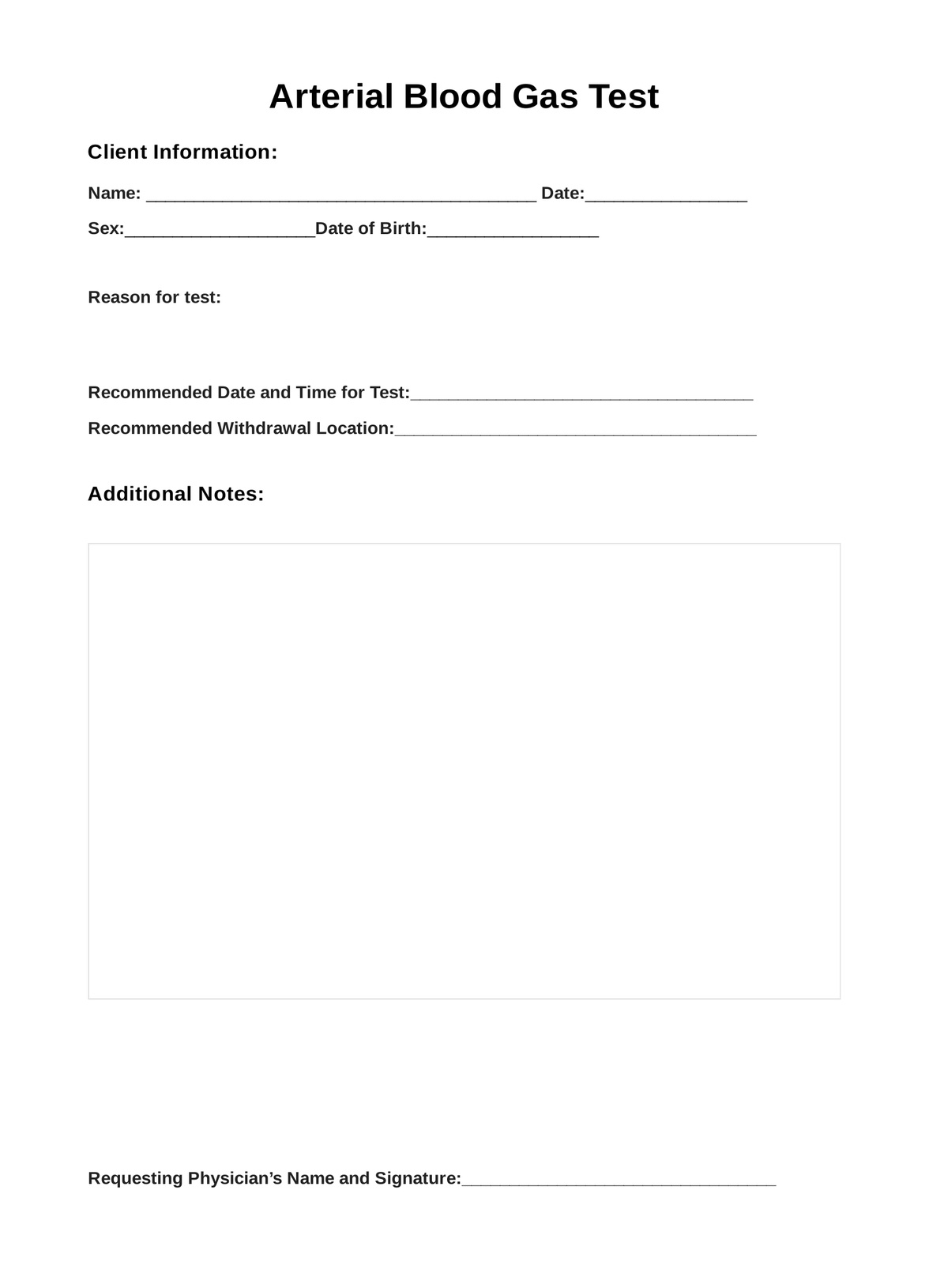Physicians, pulmonologists, critical care physicians, nurses, respiratory therapists, surgeons, and neonatologists are among the healthcare professionals who will typically request an arterial blood gas test.

Arterial Blood Gas
Learn more about the arterial blood gas test, what it�??s for, and what substances it measures.
Arterial Blood Gas Template
Commonly asked questions
The request forms to conduct an arterial blood gas test are commonly used when the patient is in respiratory distress when one is monitoring the severity of a patient??s respiratory condition, and when one needs to check the effectiveness of a medication for the patient??s condition. For more situations, refer to the ??When Would You Use this Test?? section above.
Collecting the blood sample takes a few minutes. However, processing it, analyzing the results, and formulating an interpretation can take a few hours, depending on the physician in charge of the procedure.
EHR and practice management software
Get started for free
*No credit card required
Free
$0/usd
Unlimited clients
Telehealth
1GB of storage
Client portal text
Automated billing and online payments











